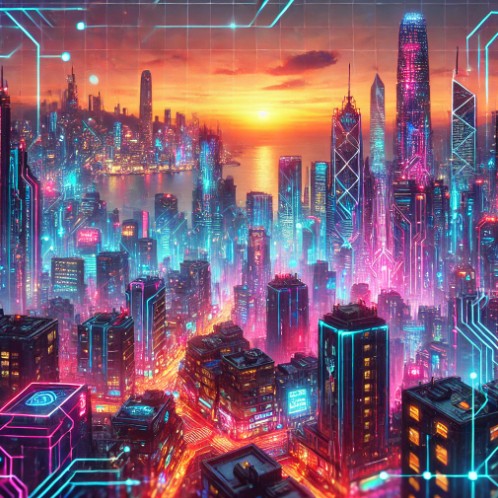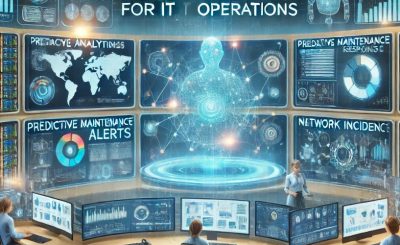Table of Contents
Introduction
Artificial Intelligence (AI) has revolutionized the way we generate images, making it easier than ever to create stunning visuals without the need for advanced design skills. The term “AI image” refers to images generated using artificial intelligence algorithms, such as deep learning and generative adversarial networks (GANs). These images can be used in various fields, including digital marketing, content creation, and e-commerce.
In this comprehensive guide, we will explore how AI-generated images work, their applications, ethical considerations, and best practices for using them effectively while adhering to SEO and Google Adsense policies.
What is an AI Image?
An AI image is a visual representation created using artificial intelligence models. These models are trained on large datasets of images to understand patterns, textures, colors, and compositions, enabling them to generate new images that resemble real-world visuals.
How AI Image Generation Works
AI image generation typically involves the following technologies:
- Generative Adversarial Networks (GANs) – Two neural networks, a generator and a discriminator, work together to create high-quality images.
- Stable Diffusion Models – AI models that use textual descriptions (prompts) to generate unique images.
- Neural Style Transfer (NST) – AI applies the artistic style of one image to another.
- Deep Learning Algorithms – These models analyze patterns and generate visuals based on learned data.
Applications of AI Images
AI-generated images have found use across multiple industries, enhancing creativity and efficiency. Some of the most common applications include:
1. Digital Marketing & Advertising
- Creating high-quality ad visuals without hiring graphic designers.
- Enhancing social media campaigns with unique AI-generated imagery.
2. Content Creation
- Generating illustrations for blog posts, websites, and articles.
- Creating unique book covers and digital artwork.
3. E-commerce & Product Design
- Visualizing products in different styles and backgrounds.
- Enhancing online store images to attract customers.
4. Game Development & Virtual Reality
- Creating realistic environments and characters for video games.
- Enhancing virtual reality experiences with AI-generated assets.
5. AI-Powered Personalization
- Customizing user experiences based on AI-generated graphics.
- Creating unique avatars and profile images.
Best Practices for Using AI Images
To ensure AI-generated images comply with Google Adsense policies and SEO guidelines, consider the following best practices:
1. Ensure Originality
- Avoid generating images that replicate copyrighted materials.
- Use unique AI-generated visuals instead of stock images.
2. Adhere to Ethical Guidelines
- Avoid deepfakes or misleading visuals.
- Disclose when AI-generated content is used in a transparent manner.
3. Optimize for SEO
- Use descriptive file names and alt text (e.g., “ai-image-generated-landscape.jpg”).
- Compress images to improve page speed and SEO performance.
4. Maintain Image Quality
- Choose high-resolution images for a professional appearance.
- Use AI upscaling tools to enhance image clarity.
5. Respect Privacy & Data Ethics
- Do not generate or share AI images that could violate personal privacy laws.
- Follow Google’s image policies to avoid issues with Adsense approval.
Examples of AI Image Generation
Example 1: Creating a Basic AI Image
To generate an AI image using a text-to-image model, follow these steps:
- Visit an AI image-generation tool like DALL·E, Deep Dream Generator, or Stable Diffusion.
- Enter a descriptive text prompt, such as:
- “A futuristic city skyline at sunset, cyberpunk style.”
- Adjust parameters like resolution, style, and aspect ratio.
- Click Generate and download the AI-created image.
Example 2: Using AI for Product Visualization
A clothing brand wants to showcase new designs before production. By using AI image generation:
- Upload existing designs or describe the desired apparel style.
- AI generates realistic models wearing the new designs.
- The brand uses these images in promotional materials and social media.
Example 3: AI-Powered Illustrations for a Blog Post
A content creator needs unique visuals for a blog about space exploration. Instead of hiring an illustrator, they:
- Use AI to generate space-themed images with text prompts.
- Select the most relevant images and optimize them for web use.
- Integrate the images into their blog post for a visually appealing experience.
FAQs About AI Image Generation
1. Are AI-generated images copyright-free?
It depends on the AI platform used. Some tools provide commercial licenses, while others restrict usage. Always check terms before using AI images commercially.
2. Can AI-generated images be used for Google Adsense?
Yes, as long as they follow Google’s image policies. Avoid misleading, harmful, or inappropriate AI-generated visuals.
3. Which AI tools are best for generating images?
Popular AI image generators include:
- DALL·E (by OpenAI)
- MidJourney
- Stable Diffusion
- Runway ML
4. Do AI-generated images affect website SEO?
Yes, AI images can improve engagement and rankings if properly optimized with:
- Relevant alt text and captions.
- Compressed file sizes for faster loading times.
- Mobile-friendly formatting.
5. Are AI-generated images ethical?
Ethical concerns arise when AI images are used to mislead or impersonate real individuals. Always ensure transparency and avoid deceptive practices.

External Links
For further reading on AI image generation:
Conclusion
AI-generated images have opened new possibilities for creativity and efficiency in digital content creation. Whether you are a marketer, designer, or content creator, leveraging AI for image generation can significantly enhance your workflow. However, it is crucial to follow best practices, ensure originality, and comply with ethical and legal guidelines. Thank you for reading the DevopsRoles page!
